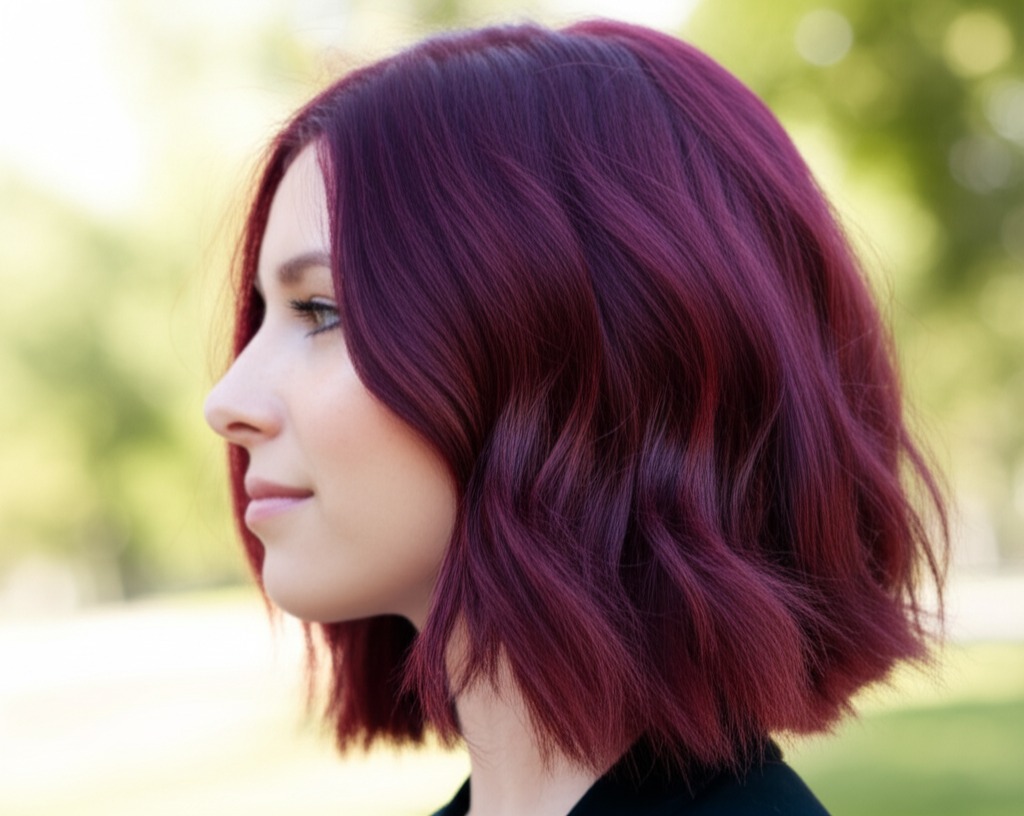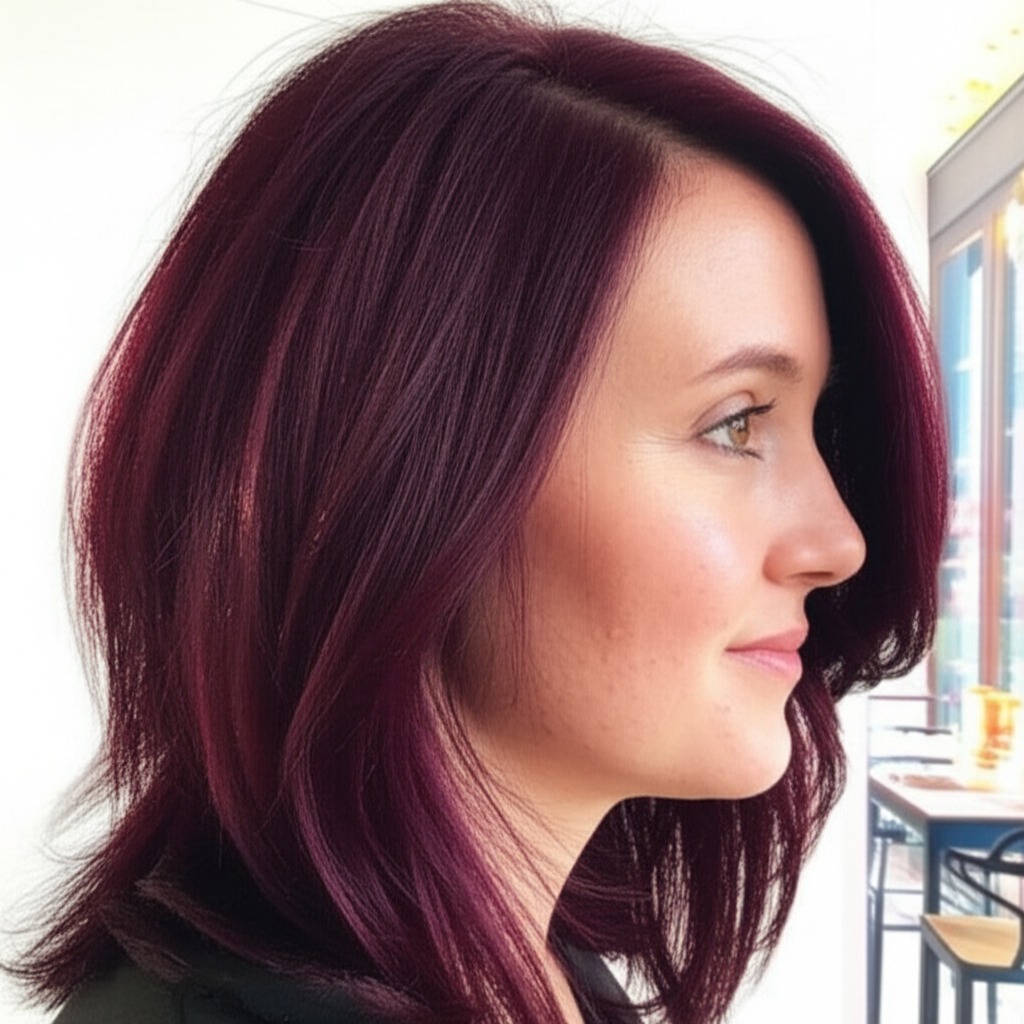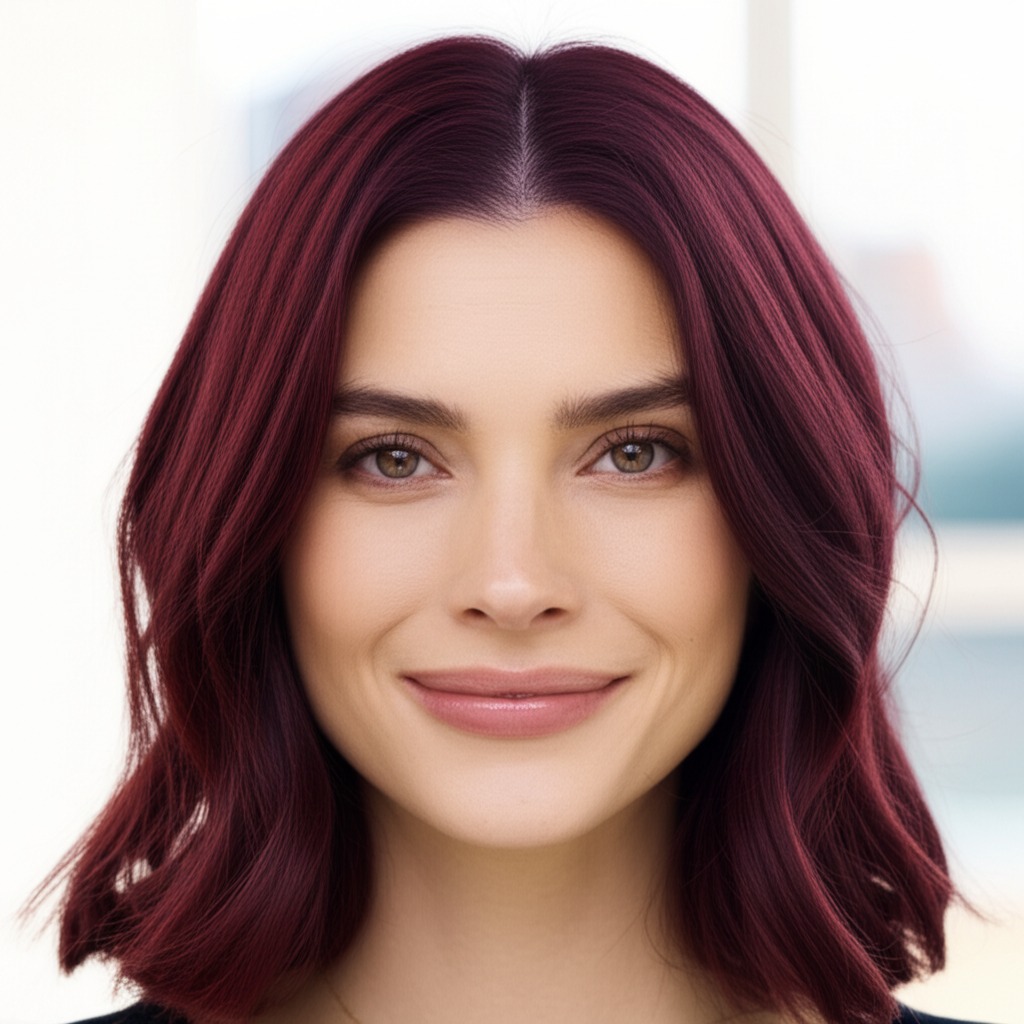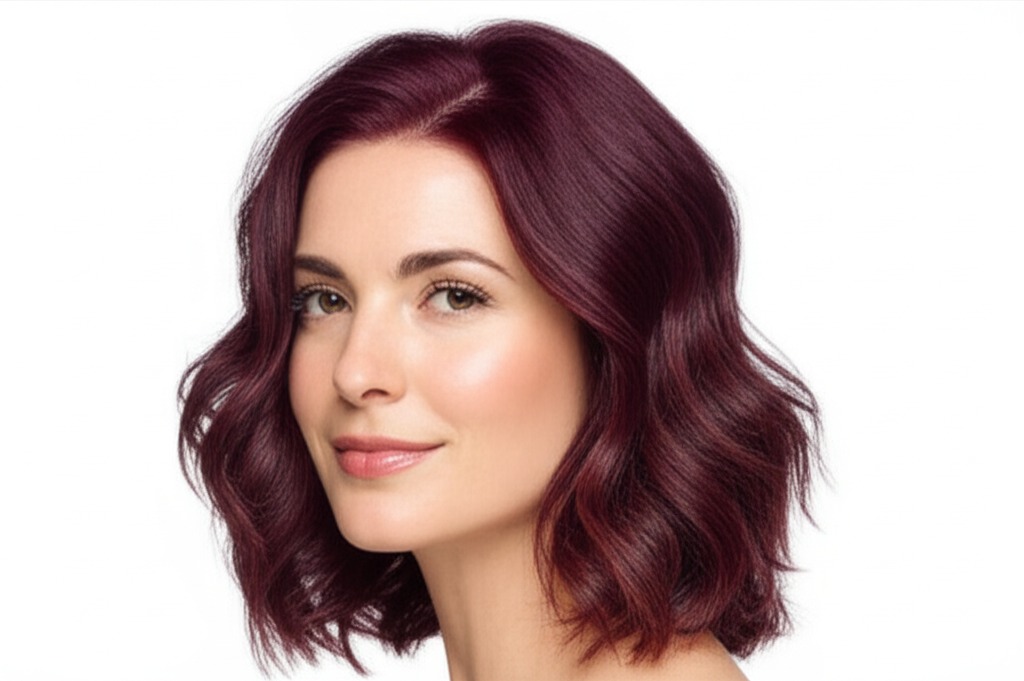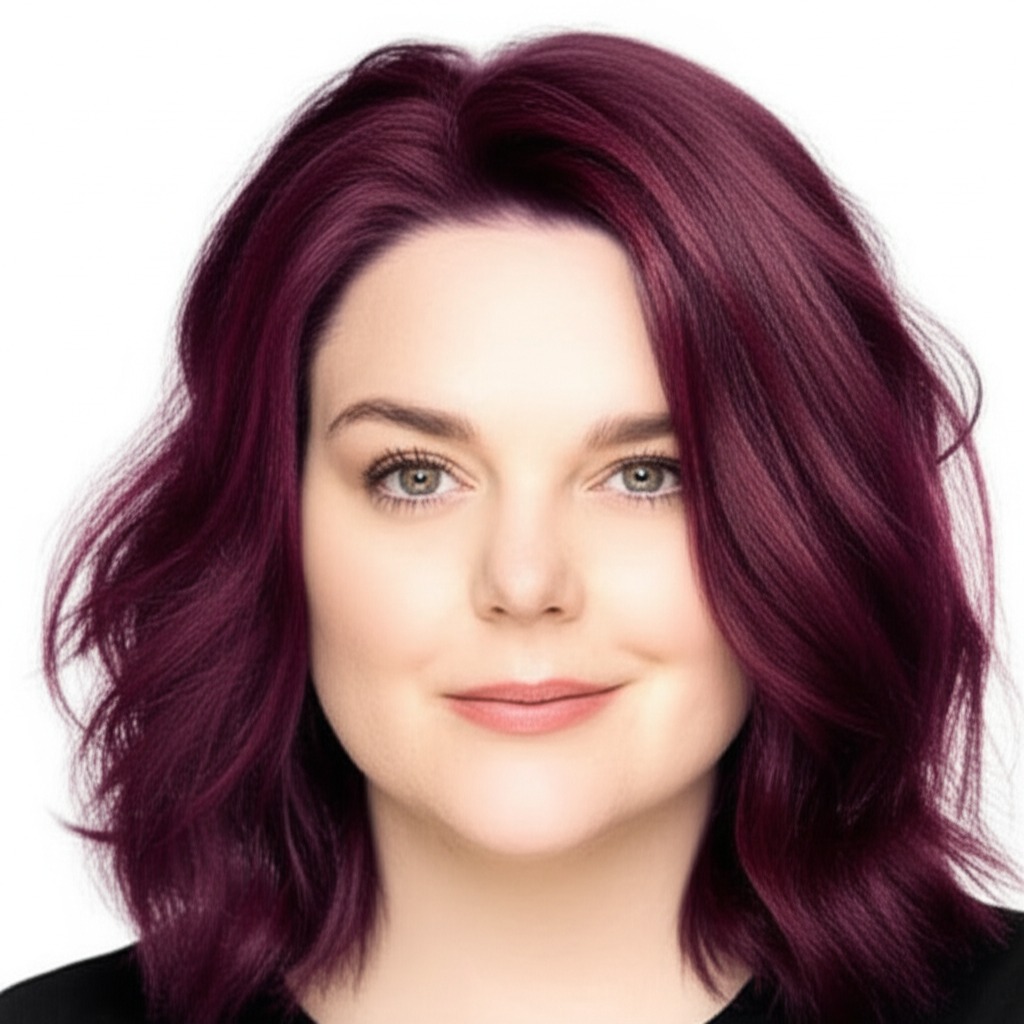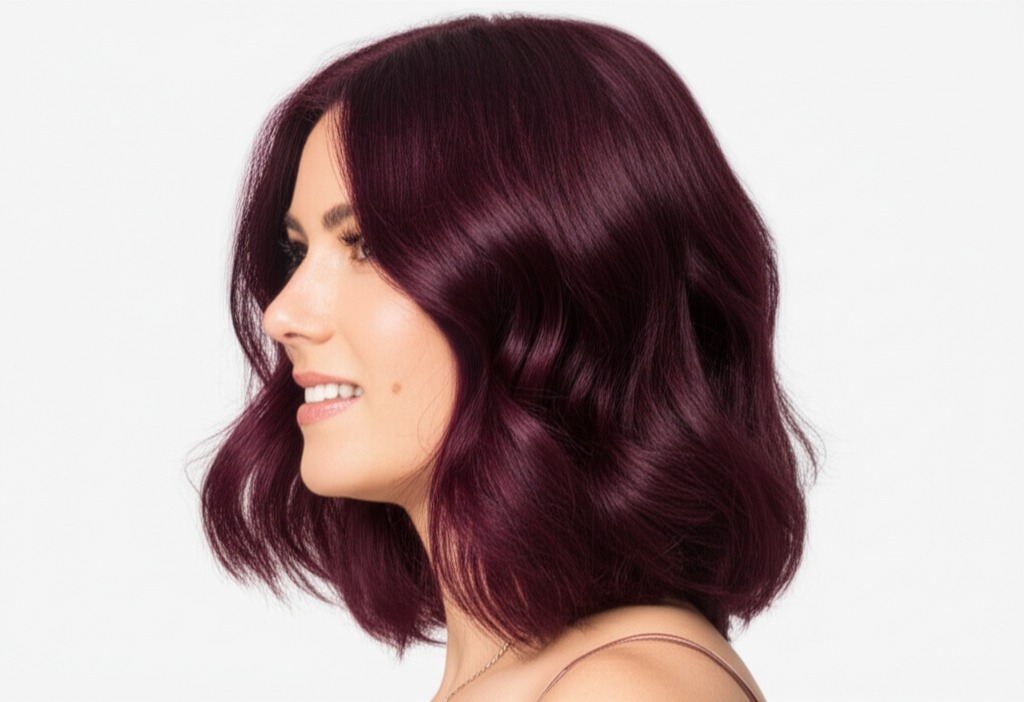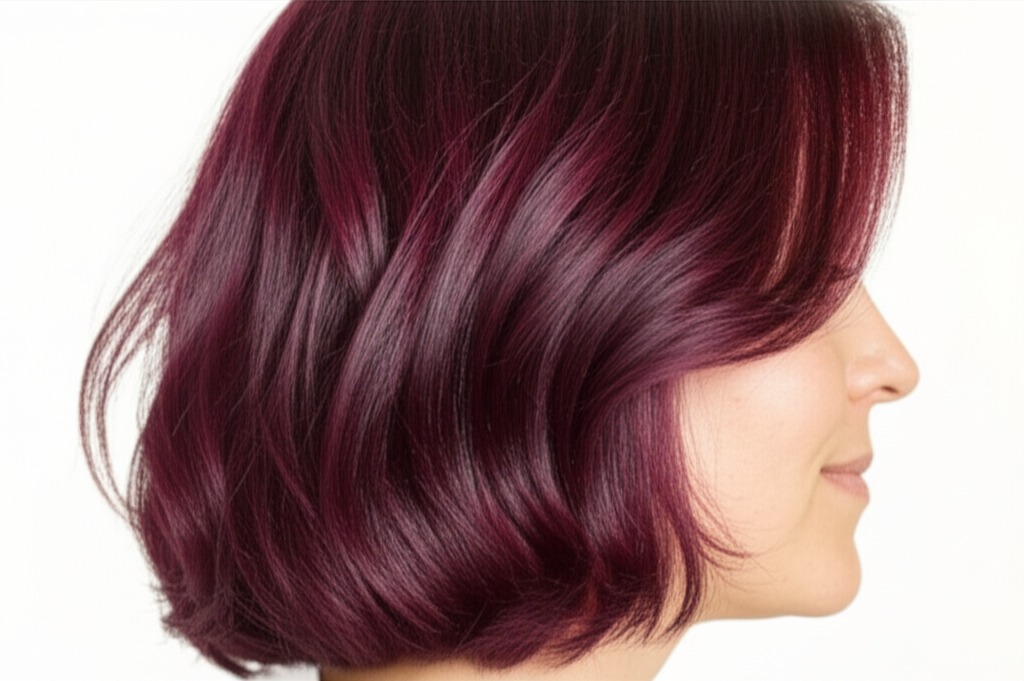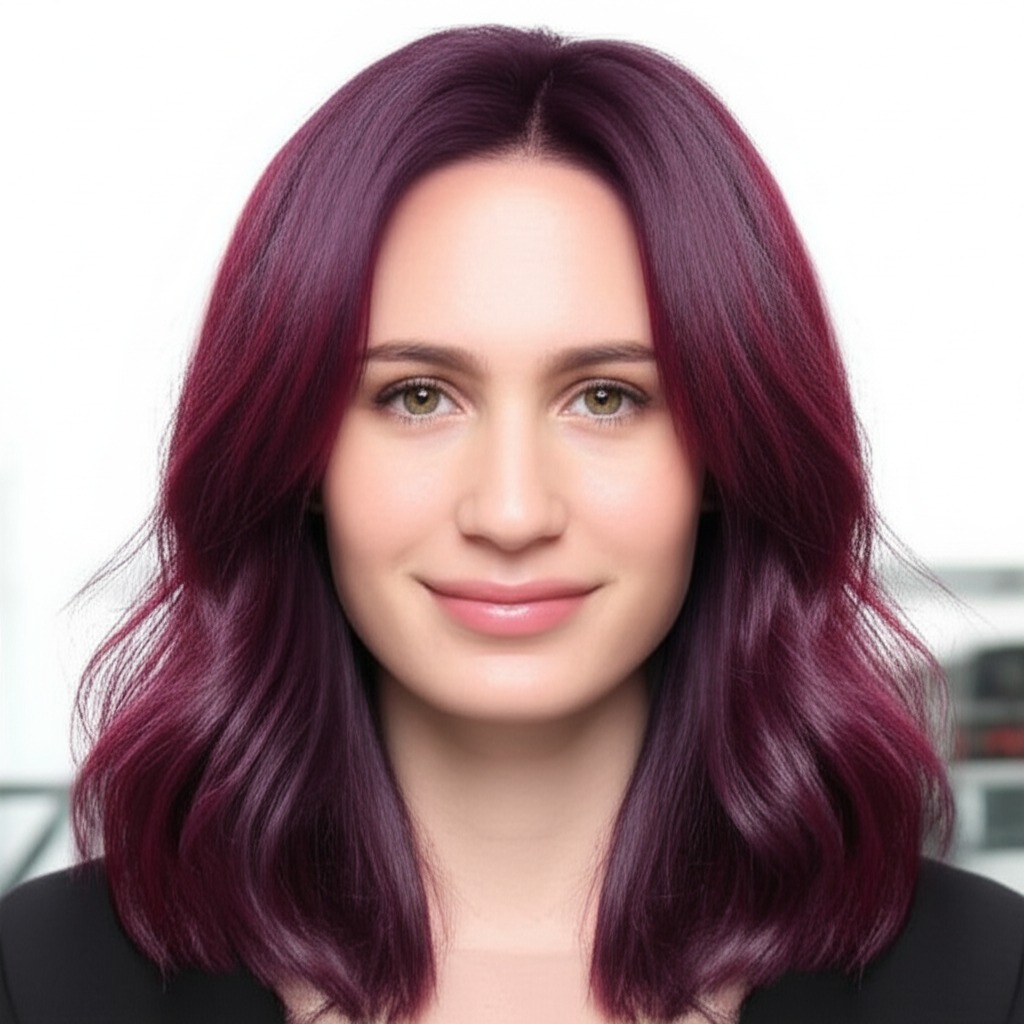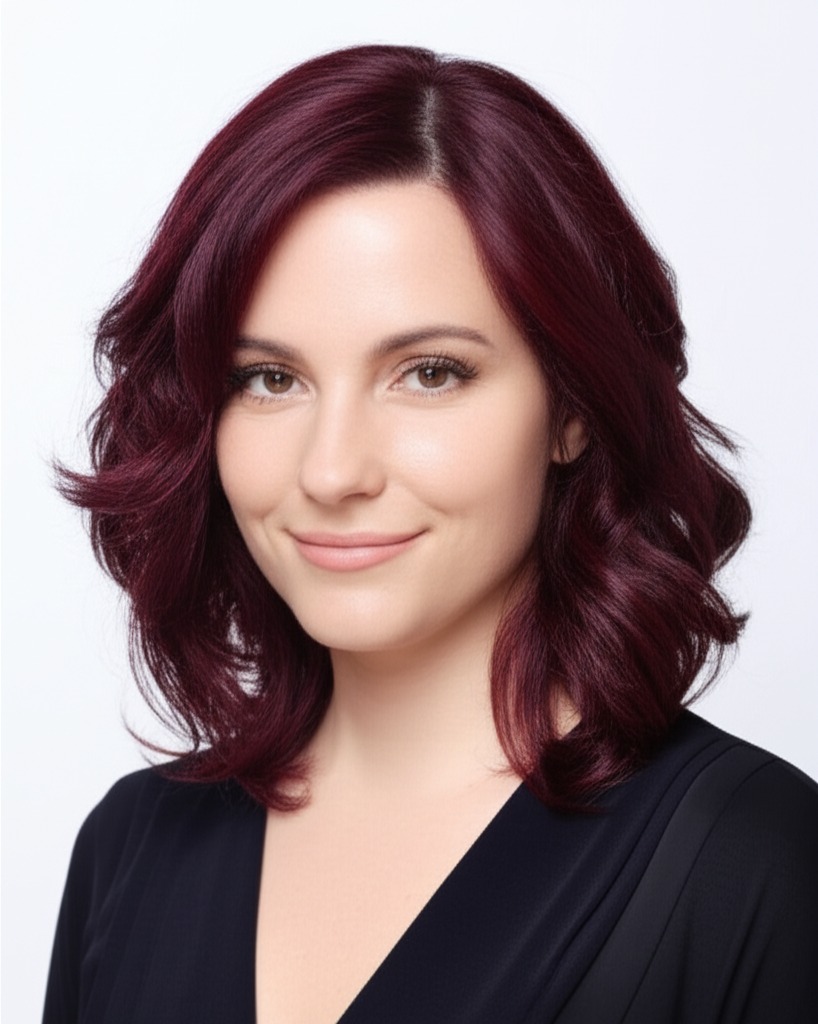#Dive into Deep Beauty: A Guide to Burgundy Hair Color
Burgundy hair – a rich, wine-inspired hue that blends the boldness of red with the sophistication of purple – is having a major moment! It’s universally flattering when done right, but achieving your perfect burgundy requires understanding its nuances. This guide will break down everything you need to know about rocking this gorgeous color, from undertones and techniques to at-home care and potential pitfalls.
#1. Understanding Burgundy: Shades & Depth
Burgundy isn't just one color; it’s a family! The key lies in understanding its components: red and purple. The ratio of these colors dictates the overall tone, while the “level” determines how dark or light it is.
Undertone:
- Cool Burgundy: Leans more towards purple, creating a jewel-toned effect. It often has hints of blue or violet. This is generally considered the most classic "burgundy" look.
- Neutral Burgundy: A balanced blend of red and purple – it’s versatile and works well with many skin tones. It's not overly cool or warm.
- Warm Burgundy: Has more red pigment, giving a slightly brick-toned or berry-like appearance. This can be gorgeous on warmer complexions but requires careful consideration (more on that below).
Depth/Levels: Hair color levels range from 1 (black) to 10 (lightest blonde). Burgundy typically works best within the 2-7 level range, depending on your natural hair color and desired intensity.
- Level 2-4: Deep, dramatic burgundy – perfect for those wanting a bold statement or covering significant gray.
- Level 5-7: A more muted, dimensional burgundy – often looks very natural and is easier to maintain.
#2. Who Does Burgundy Flatter?
Burgundy's beauty lies in its adaptability, but some factors make it shine even brighter on certain people:
- Skin Tone & Undertone:
- Cool Skin Tones (pink or blue undertones): Cool burgundy shades are your best friend! They enhance the coolness of your complexion.
- Neutral Skin Tones: You're lucky – you can usually pull off any shade of burgundy, from cool to warm! Experiment and see what you love.
- Warm Skin Tones (yellow or golden undertones): Be cautious with very cool burgundies; they might wash you out. Opt for warmer, more berry-toned burgundies to complement your skin's warmth.
- Eye Color: Burgundy complements a wide range of eye colors:
- Blue Eyes: The red tones in burgundy make blue eyes pop beautifully!
- Green Eyes: Burgundy creates a stunning contrast with green eyes, enhancing their vibrancy.
- Brown Eyes: Burgundy adds depth and richness to brown eyes, making them appear more luminous.
- Natural Level Starting Point:
- Dark Hair (Levels 1-3): A single process is often enough for a noticeable change.
- Medium Hair (Levels 4-6): Highlights or lowlights can add dimension and prevent the color from looking flat.
- Lighter Hair (Levels 7+): Requires more processing to achieve a deep burgundy, potentially involving multiple sessions.
#3. Technique Options: From Subtle to Statement
How you apply the color dramatically impacts the final result:
- Single Process: The most straightforward method – applying a uniform color all over. Best for covering gray or achieving an even, solid look on darker hair.
- Highlights/Lowlights: Adds dimension and movement by strategically placing lighter (highlights) or darker (lowlights) burgundy tones.
- Babylights: Ultra-fine highlights that mimic the natural sun-kissed effect of a child’s hair. Creates subtle depth and shine.
- Gloss/Toner: Used to adjust the tone of existing color, deepen richness, or add shine. Essential for maintaining burgundy's vibrancy.
- Balayage-Effect vs Solid: A balayage approach (hand-painted highlights) creates a softer, more natural transition and is easier to maintain than a solid application.
#4. Maintenance & Longevity: Planning Ahead
Burgundy requires commitment! Here’s what to expect:
- Wash Frequency: Limit washes to 2-3 times per week to preserve color intensity.
- Toner Refresh: Expect toners every 6-8 weeks, especially for cool burgundies which are prone to fading.
- Root Growth Pacing: Discuss with your stylist how quickly you want roots to show – this impacts the frequency of touch-ups. A more lived-in look can extend time between appointments.
- Budget/Time Planning: Burgundy color is typically a mid-range investment. A single process might cost $100-$250, while more complex techniques (balayage, multiple sessions) could range from $250 - $600+. Expect salon visits every 4-8 weeks.
#5. Seasonality & Pairing with Cuts: Style it Out!
Burgundy's versatility shines in different seasons and hairstyles:
- Seasonal Tweaks:
- Fall/Winter: Deeper, richer burgundies feel cozy and dramatic.
- Spring/Summer: Lighter, more berry-toned burgundies are fresh and vibrant.
- Cut Pairings:
- Bob & Lob: Burgundy looks sleek and sophisticated with blunt bobs or lobs.
- Long Layers: Adds movement and dimension to long hair – perfect for showcasing the color's depth.
- Pixie Cut: A bold burgundy pixie is a statement-making look!
- Event/Occasion Picks:
- Work: A muted, dimensional burgundy looks professional and polished.
- Daytime: Lighter, brighter burgundies are fun and approachable.
- Evening: Deep, jewel-toned burgundies exude glamour and sophistication.
- Weddings: Consider a softer, more romantic shade of burgundy that complements the wedding’s overall aesthetic.
#6. At-Home Care: Keeping Your Color Vibrant
- Sulfate-Free Shampoo & Conditioner: Crucial! Sulfates strip color quickly. Clarifying shampoos should be used sparingly (every 4-6 weeks) to remove buildup, but always follow with a deep conditioning mask.
- Heat Protection: Essential before using any heat styling tools (blow dryers, straighteners, curling irons).
- Color-Safe Styling Tips: Avoid harsh chemicals and excessive sun exposure. Rinse hair with cool water after washing to seal the cuticle and lock in color.
- Product Checklist: Sulfate-free shampoo & conditioner, deep conditioning mask, heat protectant spray, leave-in conditioner (especially for dry or curly textures).
#7. Common Pitfalls: Avoiding Color Mishaps
- Brassiness: Especially common with lighter hair or cool burgundy shades. Use a purple shampoo/mask regularly to neutralize yellow tones.
- Banding: Uneven color application, often caused by improper technique or uneven product distribution. Requires professional correction.
- Patchiness: Can occur on previously colored or damaged hair. A strand test is always recommended before applying any new color.
#8. Pros & Cons: Weighing the Options
Pros: Universally flattering (with proper shade selection), adds depth and dimension, enhances eye color, can cover gray effectively. Cons: Requires regular maintenance (toner refreshes), potential for fading, can be damaging if not cared for properly, may require multiple salon visits to achieve desired result.
#9. Salon Consultation Script: Setting Expectations
Before you sit in that stylist's chair, prepare! Here are some prompts to guide the conversation:
- "I’m interested in burgundy hair color – what shades would best suit my skin tone and undertone?"
- “What technique do you recommend based on my current hair level and desired result?”
- “Can we discuss a maintenance plan, including toner frequency and root growth pacing?”
- “What steps can I take at home to protect my color and keep it vibrant?”
- "Could we perform a strand test before applying the full color?"
#10. FAQs: Your Burning Questions Answered
- Can I go burgundy directly from black hair? It’s possible, but requires significant lightening which can damage hair. A gradual approach is highly recommended to minimize stress on your strands.
- Will burgundy make my hair look red? Not necessarily! The purple tones balance the red and create a more complex hue. The right shade selection is key.
- How long does burgundy last? Color longevity depends on your natural hair color, chosen technique, and at-home care routine. Expect noticeable fading within 4-6 weeks.
- Can I do burgundy myself at home? While possible, professional application is strongly recommended for best results and to avoid damage. Home kits often lack the precision of a salon experience.
- What if my burgundy turns out too bright? A toner can quickly adjust the shade – your stylist can tone it down or add more depth.
- Is burgundy damaging to hair? Any color process involves some level of damage, but proper technique and aftercare can minimize its impact. Communicate with your stylist about any concerns regarding hair health.
With careful planning and professional guidance, you’ll be rocking a gorgeous head of burgundy hair in no time!
